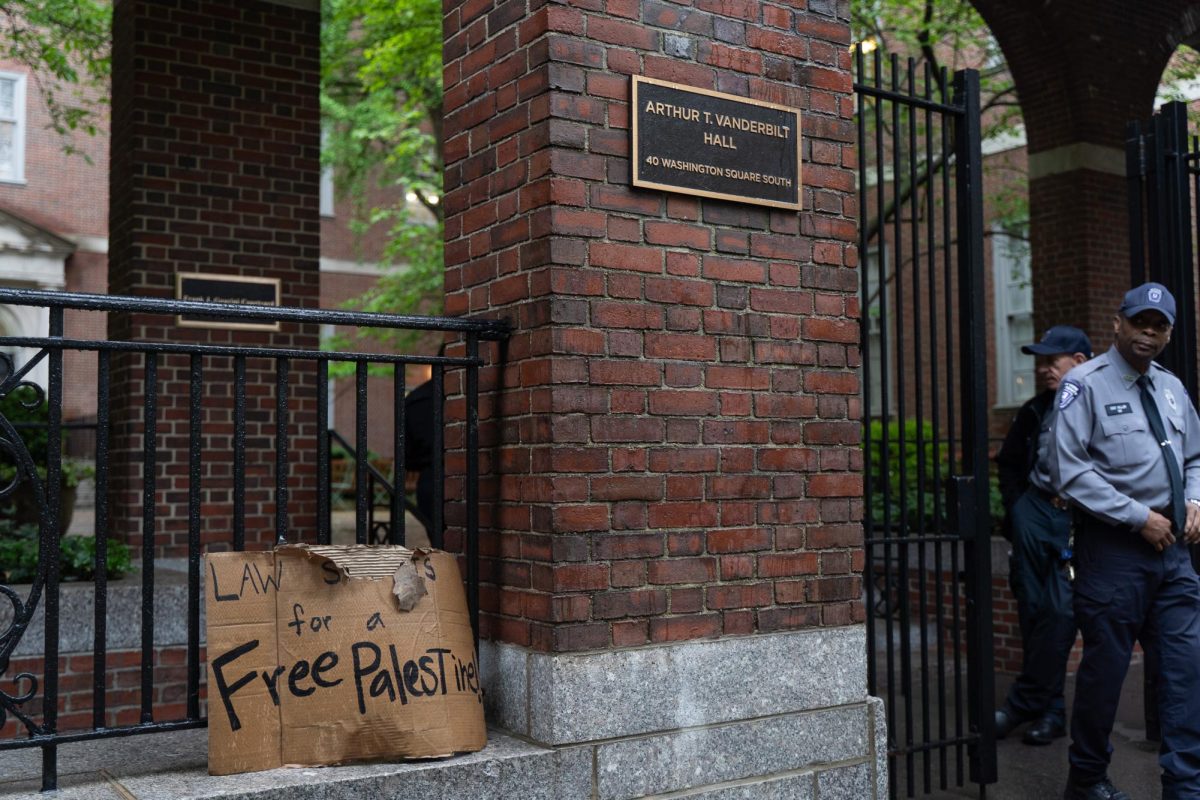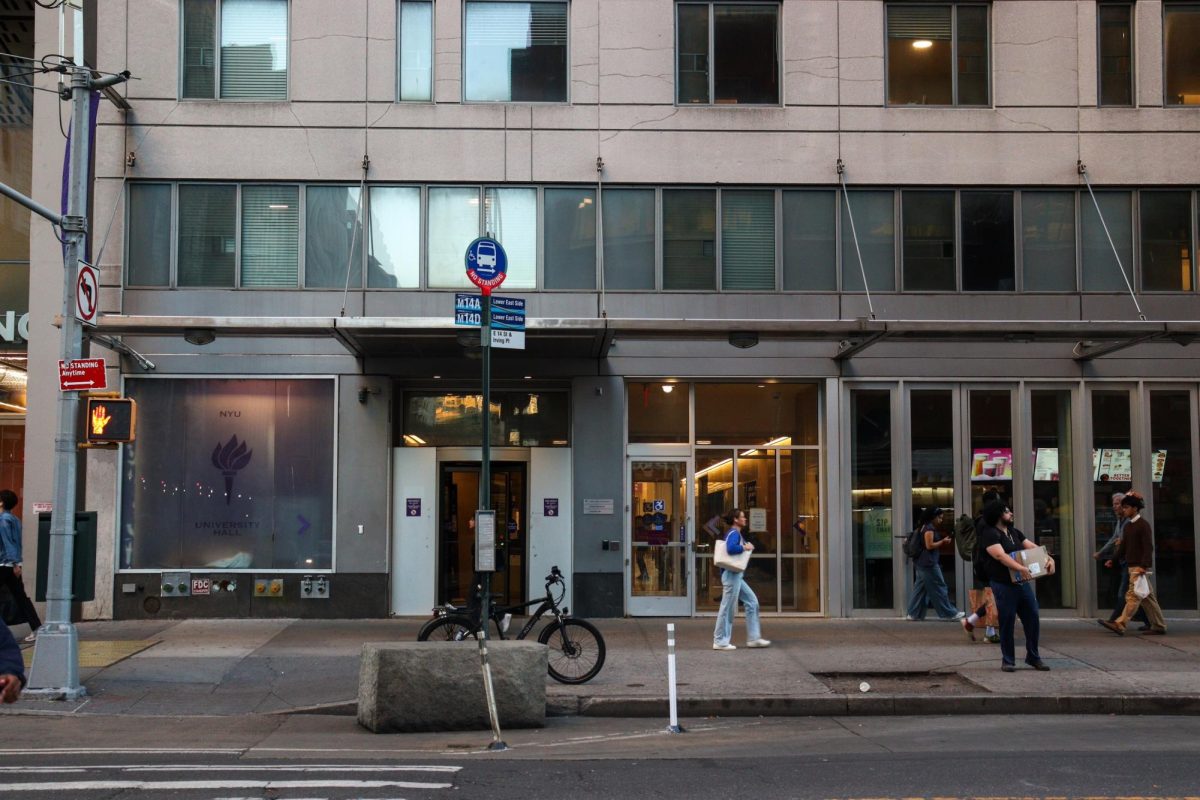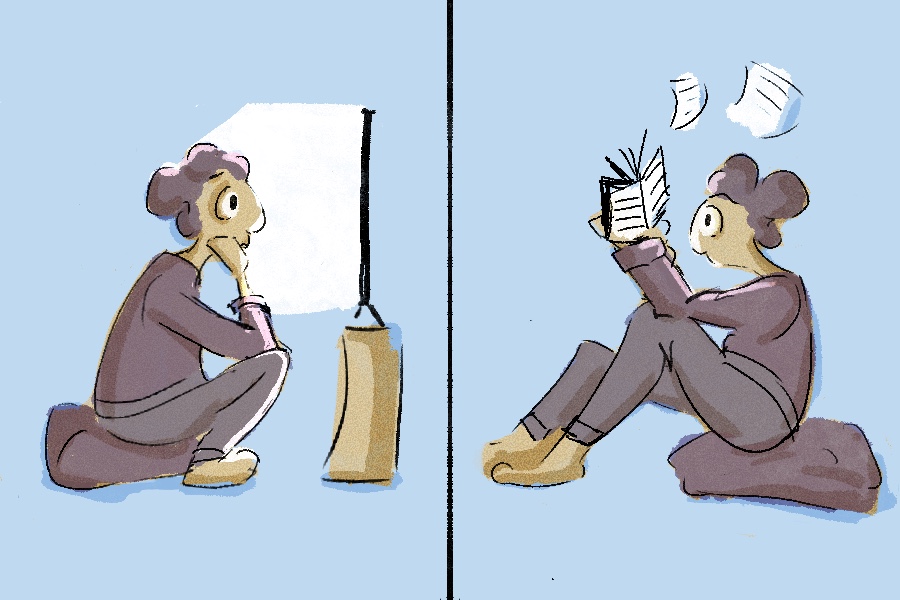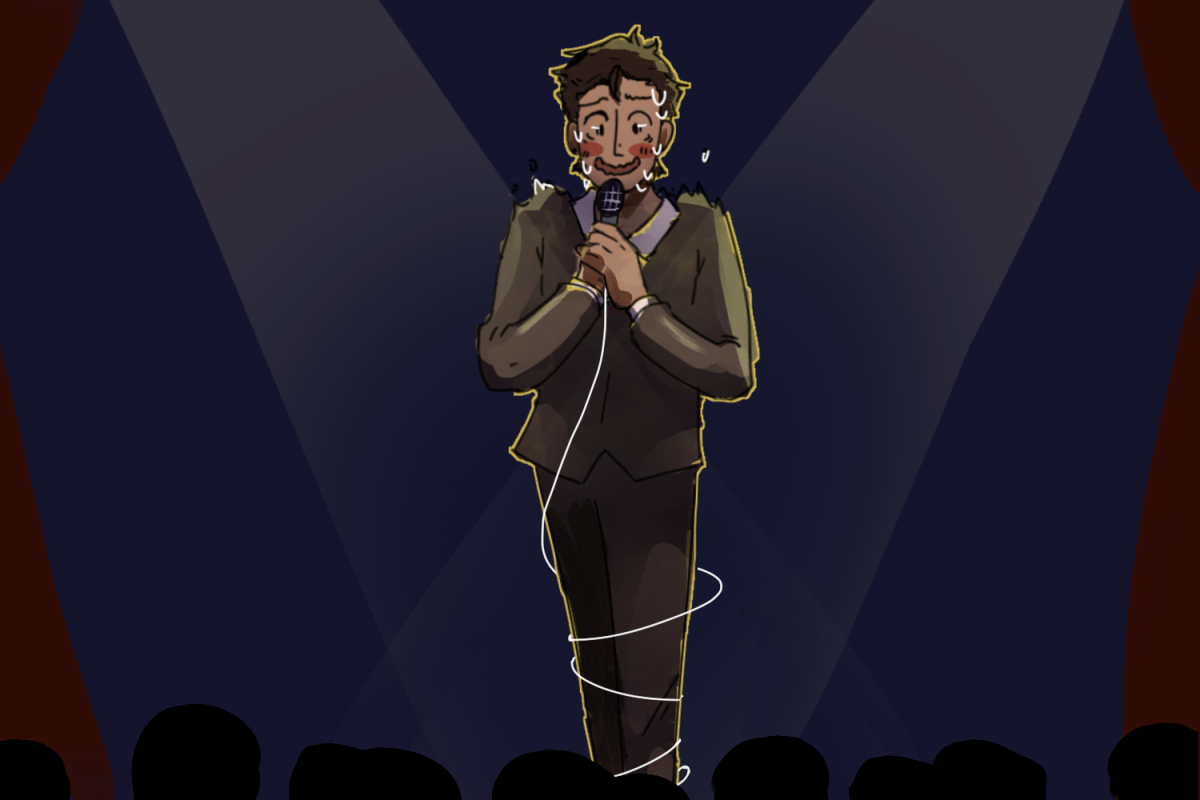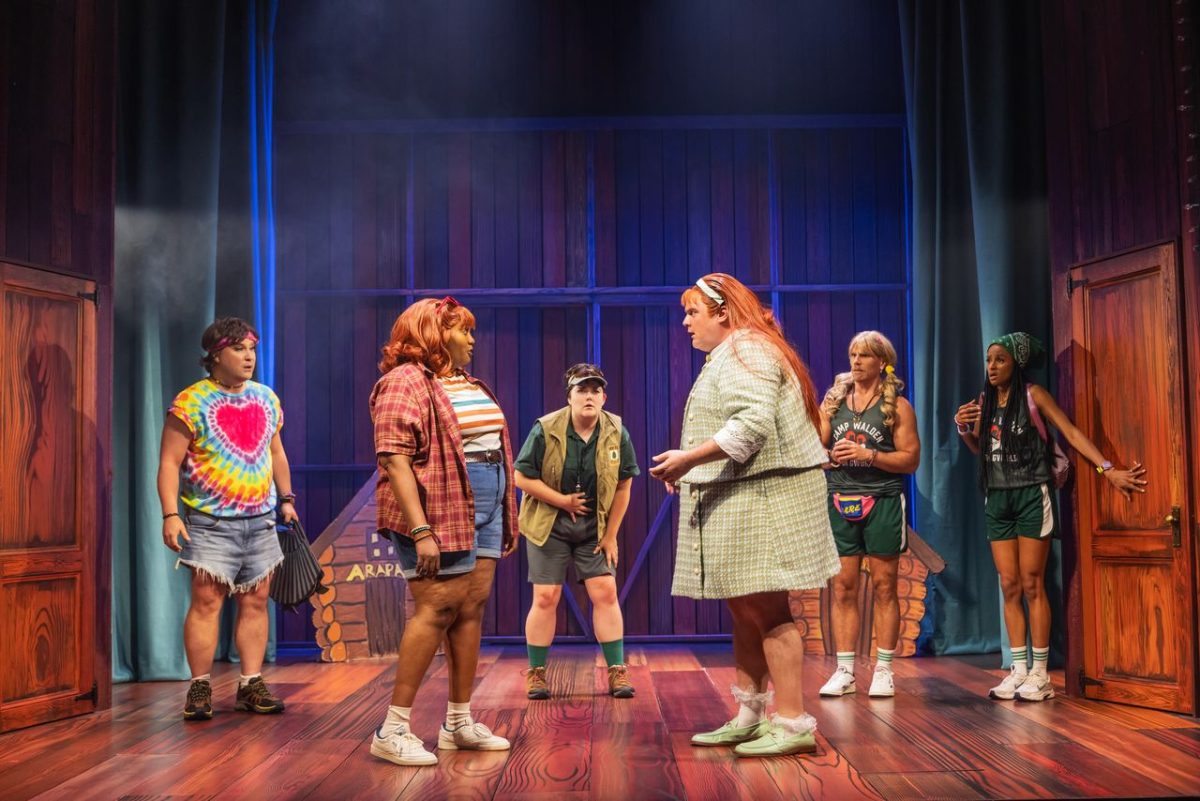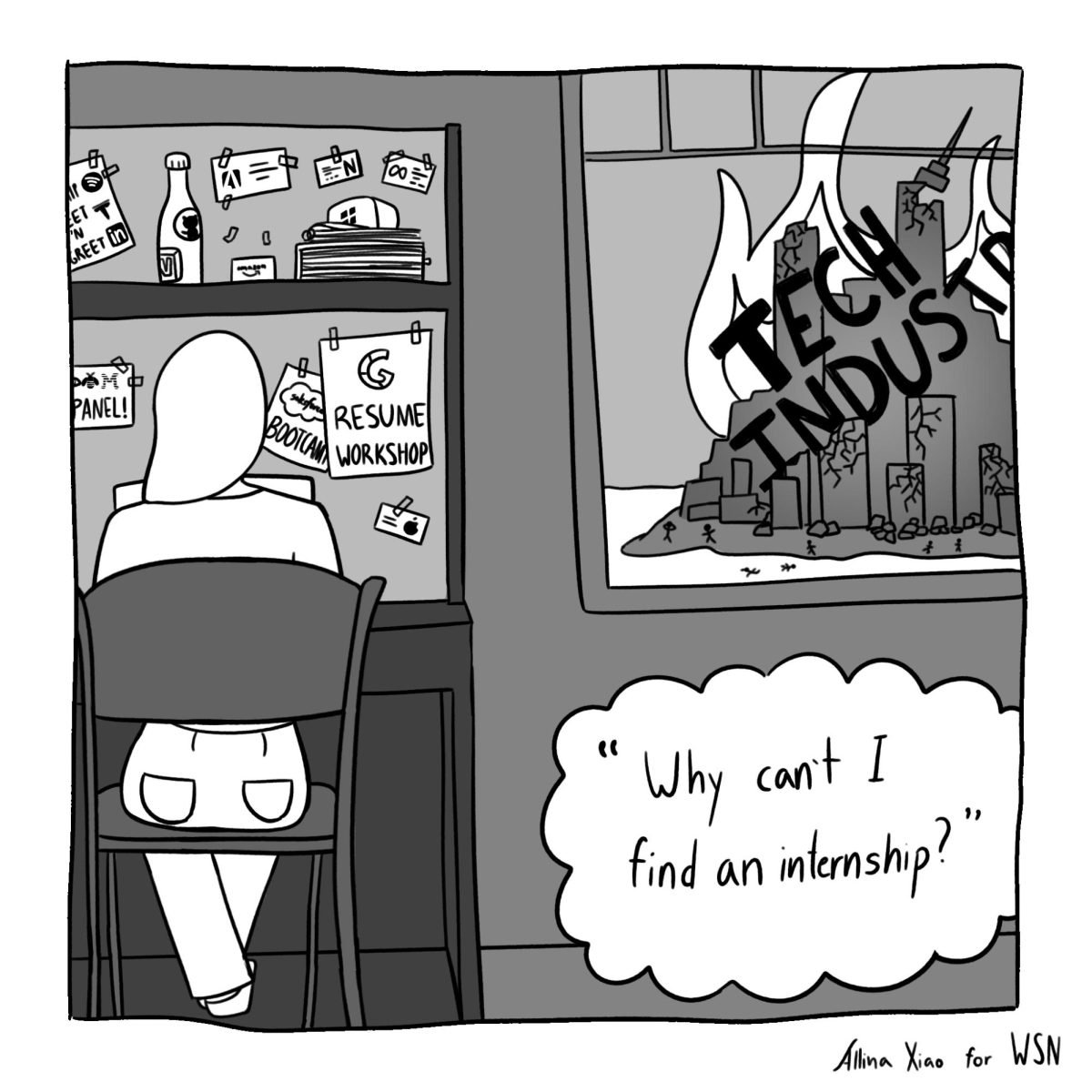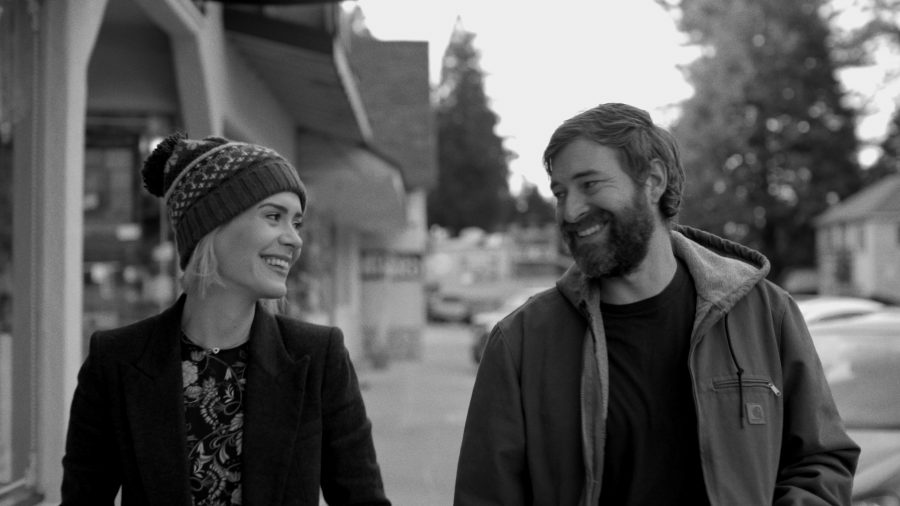Though Unique, ‘Blue Jay’ Ultimately Falters
Mark Duplass and Sarah Paulson star in Alex Lehmann’s Blue Jay.
October 6, 2016
From the very first moments in “Blue Jay,” Alex Lehmann’s directorial debut, the vast and spacious forests of Crestline, California are celebrated through simple but very effective black-and-white visual approach. These exteriors are contrasted with the main setting of the film, a house in the woods packed with decades of accumulated clothes, books and music. This contrast, pretty for its own sake, becomes brilliant once one realizes how much it mirrors the lives of the film’s two main characters, both of whom are removed from meaningful lives by a longing for the past.
The film’s plot begins in a supermarket, where old high school sweethearts Jim (Mark Duplass) and Amanda (Sarah Paulson) serendipitously run into each other. They go for coffee and catch up, but clearly a lot is going unsaid. Tension unaddressed, they then go to Jim’s old house, relive old memories and philosophize about the disappointments of life.
If that were all, the movie would be sweet and likable, if unoriginal. But what makes it something more is a dark sense that Jim and Amanda are not just two late-30-year-olds missing their glory days. In all their reminiscing, it is clear that they are dancing around a past trauma that clearly looms over their adult lives. When they finally stop treading on eggshells, the film becomes overwhelmed by its seriousness and ends unsuccessfully. Nonetheless, “Blue Jay” is memorable and unique.
Duplass, who also wrote the script, portrays Jim as an extremely anxious but lovable loser. His body language makes this immediately clear, especially the way he clutches his face. When Duplass is showing Jim in this guarded state, he is in control. But evidently, he is not skilled enough as an actor to handle the big emotional scenes. In these moments, he chews the scenery, and the effect is distancing when it can least afford to be.
Paulson gives a more consistently subdued performance, appropriate for a character with her life much more under control. Amanda is weary after many years of parenting. Unlike Jim, she does not regret the choices she has made, but a sense of longing remains anyway. Paulson carries this feeling of noble unhappiness very well.
Duplass writes with a sense of realism that can at times become slightly mundane, but mostly rings true. Jim and Amanda are not made to be wittier than they really are. They alternate between funny and unfunny, insightful and pretentious, in a way that is very true to life.
There is an obvious debt to director Richard Linklater, famed for his exploration of suburban subculture. In the movie’s final, much more serious section, the difficulty of succeeding in the way Linklater does with “Before Sunset” is made clear. The transition from a light to an extremely serious conversation between Jim and Amanda is definitely called for, but Duplass cannot quite pull it off. The catharsis the movie seemed to be building up to is undermined by overwriting, in addition to overacting. But for an hour, memories of “Before Sunset” ring out.
Email Tony Schwab at [email protected].





